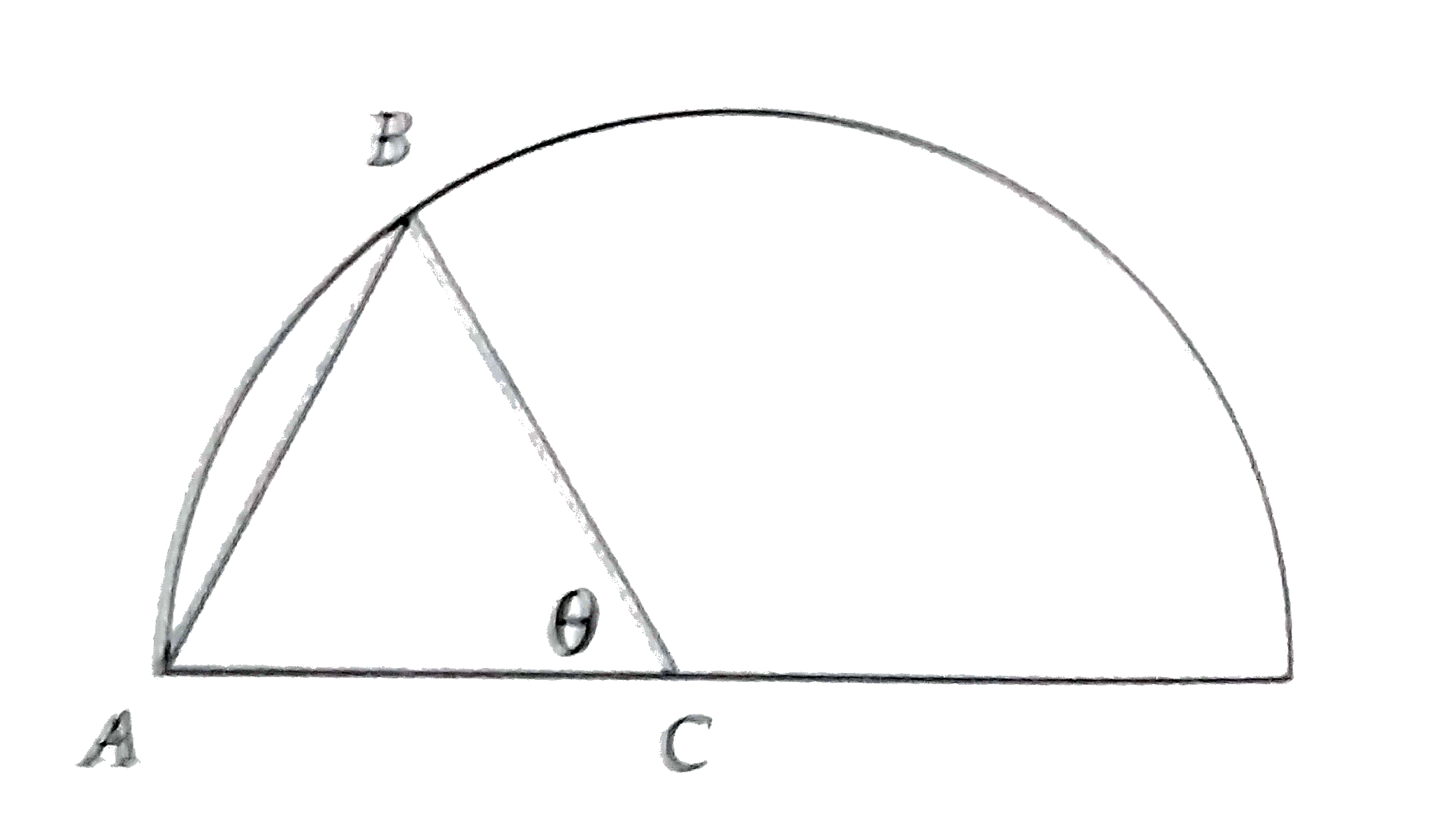AB is the diameter of a semicircle k,C is an arbitrary point on the semicircle (other than A or B) and S is the centre of the circle inscribed into triangle ABC, then measure of-
angle ASB changes as C moves on k
angle ASB is the same for all positions of C but it cannot be determined without knowing the radius
angle ASB=135∘ for all positions of C
angle ASB=150∘ for all positions of C
The correct Answer is:C
To solve the problem, we need to analyze the geometry of the semicircle and the triangle formed by points A, B, and C. Let's break down the solution step by step.
Step 1: Draw the semicircle and label the points
- Draw a semicircle with diameter AB.
- Let A and B be the endpoints of the diameter.
- Choose an arbitrary point C on the semicircle (not equal to A or B).
- Mark the center of the semicircle as O.
Step 2: Identify the angles in triangle ABC
- Since AB is the diameter of the semicircle, by the inscribed angle theorem, we know that angle ACB is a right angle (90 degrees).
- Therefore, we can write:
∠ACB=90∘
Step 3: Understand the incenter S
- The point S is the incenter of triangle ABC, which is the point where the angle bisectors of the triangle intersect.
- The angles at A and B can be denoted as:
∠CAB=xand∠ABC=y
- Since the sum of angles in a triangle is 180 degrees, we have:
x+y+90∘=180∘⟹x+y=90∘
Step 4: Find angles at S
- The angles at S can be expressed as:
∠SAB=x2and∠SBA=y2
- Therefore, we can write:
∠ASB=180∘−(∠SAB+∠SBA)=180∘−(x2+y2)
Step 5: Substitute the values
- Since x+y=90∘, we have:
∠ASB=180∘−(90∘2)=180∘−45∘=135∘
Conclusion
- Therefore, the measure of angle ASB is always 135 degrees, regardless of the position of point C on the semicircle.
- The correct option is:
Option C: ∠ASB=135∘ for all positions of C.
- Draw a semicircle with diameter AB.
- Let A and B be the endpoints of the diameter.
- Choose an arbitrary point C on the semicircle (not equal to A or B).
- Mark the center of the semicircle as O.
- Since AB is the diameter of the semicircle, by the inscribed angle theorem, we know that angle ACB is a right angle (90 degrees).
- Therefore, we can write:
∠ACB=90∘
- The point S is the incenter of triangle ABC, which is the point where the angle bisectors of the triangle intersect.
- The angles at A and B can be denoted as:
∠CAB=xand∠ABC=y
- Since the sum of angles in a triangle is 180 degrees, we have:
x+y+90∘=180∘⟹x+y=90∘
- The angles at S can be expressed as:
∠SAB=x2and∠SBA=y2
- Therefore, we can write:
∠ASB=180∘−(∠SAB+∠SBA)=180∘−(x2+y2)
- Since x+y=90∘, we have:
∠ASB=180∘−(90∘2)=180∘−45∘=135∘
- Therefore, the measure of angle ASB is always 135 degrees, regardless of the position of point C on the semicircle.
- The correct option is:
Option C: ∠ASB=135∘ for all positions of C.
Topper's Solved these Questions
- BOOK - VMC MODULES ENGLISHCHAPTER - JEE MAIN - 5EXERCISE - PART III : MATHEMATICS (SECTION-2)5videos
JEE MAIN - 5
- BOOK - VMC MODULES ENGLISHCHAPTER - INVERSE TRIGONOMETRYEXERCISE - JEE ADVANCED ( ARCHIVE )10videos
INVERSE TRIGONOMETRY
- BOOK - VMC MODULES ENGLISHCHAPTER - JEE MAIN REVISION TEST - 30 | JEE -2020EXERCISE - MATHEMATICS25videos
JEE MAIN REVISION TEST - 30 | JEE -2020
Similar Questions
In Figure, C is the center of the semicircle, and the area of the semicircle is 8π. What is the area of triangle ABC in terms of θ ?
 View Solution
View SolutionThe sides of a triangle ABC lie on the lines 3x+4y=0,4x+3y=0 and x=3 . Let (h,k) be the centre of the circle inscribed in △ABC. The value of (h+k) equals
View SolutionIn a ΔABC, a semicircle is inscribed, whose diameter lies on the side c. Then the radius of the semicircle is (Where Δ is the area of the triangle ABC)
View SolutionAB is a line segment of length 48 cm and C is its mid-point. If three semicircles are drawn at AB, AC and CB using as diameters, then radius of the circle inscribed in the space enclosed by three semicircles is
View SolutionIf A, B, C are the centres of three circles touching mutually externally then the radical centre of the circles for △ABC is
View SolutionTriangle ABC is inscribed in a circle, such that AC is a diameter of the circle and angle BAC is 45∘. If the area of triangle ABC is 72 square units, how larger is the area of the circle than the area of triangle ABC ?
View SolutionFind the coordinates of the centre of the circle inscribed in a triangle whose angular points are (−36,7),(20,7)and(0,−8).
View SolutionLet a and b represent the lengths of a right triangles legs. If d is the diameter of a circle inscribed into the triangle, and D is the diameter of a circle circumscribed on the triangle, the d+D equals. (a)a+b (b) 2(a+b) (c)12(a+b) (d) √a2+b2
View SolutionThe diameter of a circle is a line which joins two points on the circle and also passes through the centre of the circle. (In the adjoining figure (Fig 11.12) AB is a diameter of the circle; C is its centre.) Express the diameter of the circle (d) in terms of its radius (r).
View SolutionA wheel of radius 8 units rolls along the diameter of a semicircle of radius 25 units; it bumps into this semicircle. What is the length of the portion of the diameter that cannot be touched by the wheel? 12 (b) 15 (c) 17 (d) 20
View Solution

